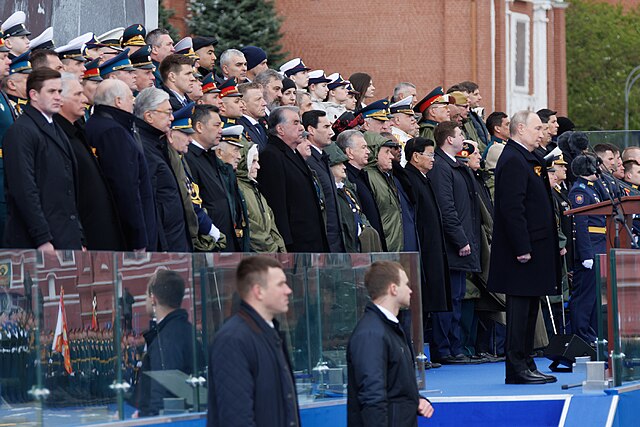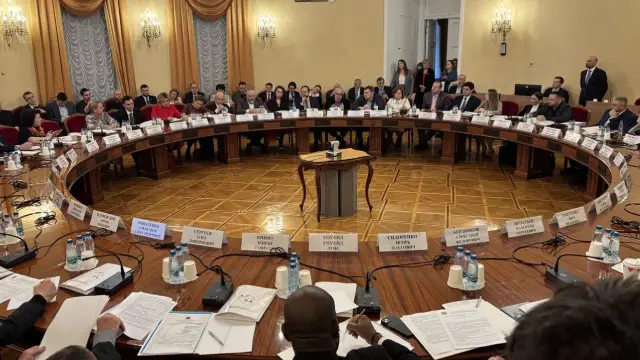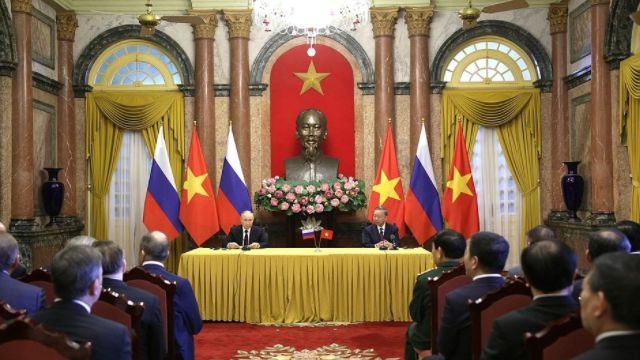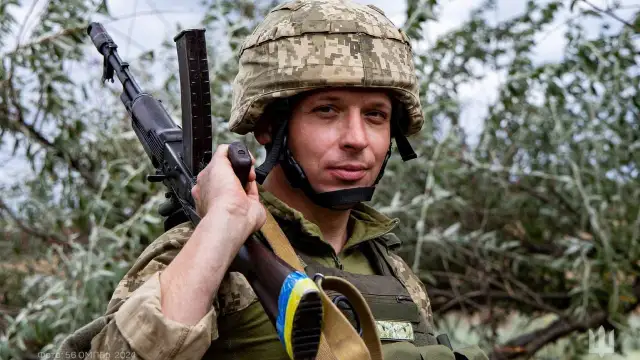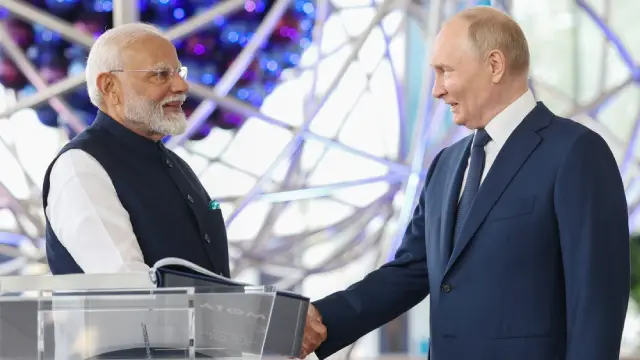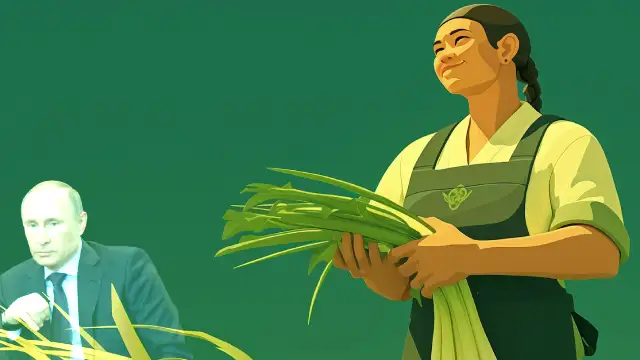Russian President Vladimir Putin presided over the 79th Victory Day Parade at Moscow’s iconic Red Square on Thursday, May 9th, to celebrate the victory of the Soviet Union against Nazi Germany in the Second World War, which is called the “Great Patriotic War” in Russia.
This was the third consecutive Victory Day Parade held in Red Square amid Russia’s ongoing special military operations in Ukraine. Around 1,000 personnel from the special military operations took part in the parade in which around 9,000 military personnel and 75 military vehicles and equipment participated.
Putin inaugurated the ceremony of the Victory Day Parade, the 21st during his tenure in the Kremlin, at 10 am Moscow time on Thursday. An iconic Soviet T-34 tank led the march of army equipment used in special military operations. Russian armoured vehicles and missile and artillery systems followed suit.
Criticising the West for allegedly embracing neo-Nazis, especially in the context of Ukraine, Putin said, “Harbouring revanchist sentiments, making a mockery of history, and seeking to justify present-day Nazi followers is part of what constitutes a common policy of Western elites to fuel regional conflicts, inter-ethnic and inter-religious strife and to contain sovereign and independent centres of global development.”
“The West would love to forget the lessons of the Second World War, but we remember that the destiny of humankind was decided during the colossal battles of Moscow, Leningrad, Rzhev, Stalingrad, Kursk, Kharkov, Minsk, Smolensk and Kiev, and in the intense and bloody fighting from Murmansk to the Caucasus and the Crimea,” Putin emphasised.
Reflecting on Soviet Union’s glorious role in defeating the Nazis, and criticising the West’s alleged attempts to effacing that role from the public memory, Putin said, “For the first three long and harsh years of the Great Patriotic War, the Soviet Union, along with all its constituent republics, fought the Nazis virtually single-handedly, while the virtually of all Europe worked to support the Nazi war machine.”
In this parade, Russia introduced the K-53949 Phoenix armoured car. Also, the armoured vehicle Z-STS, introduced in 2023, was displayed during the parade for the first time. Apart from these, an armoured car for the special units, Tiger M, was paraded along with 59095C (VPK-Ural), an armoured vehicle of the Russian military-industrial complex and BTR-82A, an armoured personnel carrier.
Among the missile and artillery systems that Russia boasted during the Victory Day Parade were the Iskander-M operational-tactical missile systems, S-400 anti-aircraft missile systems and Yars mobile ground missile systems.
On the occasion of Victory Day, Russia also displayed several war trophies, including tanks and enemy artillery vehicles that the West provided Ukraine to counter Moscow’s special military operations. Among them are American, French and German tanks provided to Ukraine by the West.
According to the State Duma deputy Olga Zanko, who also chairs the Central Headquarters of the “Victory Volunteers”, 200 veterans became spectators of the event. Also, sitting with Putin was Yevgeny Kuropatkov, a participant in the Great Patriotic War who took part in defending Stalingrad and Leningrad from the Nazi assault and also participated in the Victory Parade on June 24, 1945. Also, sitting on the other side of the President was Alexander Aleshin, who dug anti-tank ditches near Naro-Fominsky, graduated from the women’s school of sniper training, and then prepared more than twenty snipers herself during the Second World War.
Leaders of several former Soviet republics attended the Victory Day Parade at Red Square with Putin. Among them were the President of Belarus Alexander Lukashenko, President of the Republic of Kazakhstan Kassym-Jomart Tokayev, President of the Kyrgyz Republic Sadyr Japarov, President of the Republic of Tajikistan Emomali Rahmon, President of Turkmenistan Serdar Berdimuhamedov and President of the Republic of Uzbekistan Shavkat Mirziyoyev.
Along with them, the President of the Republic of Cuba Miguel Mario Díaz-Canel, the President of the Republic of Guinea-Bissau Umaro Mokhtar Sissoco Embaló and the President of the Lao People’s Democratic Republic Thongloun Sisoulith attended the celebration as guests.
Apart from Moscow, Victory Day was also celebrated in different parts of the Russian Federation and other former Soviet republics. Victory Day was also celebrated in different countries by Russian embassies, citizens and common people.
The Russian Embassy in New Delhi, India, celebrated Victory Day with fanfare. It was also celebrated in Bangladesh, Egypt, France, Israel, Japan, South Korea, Sri Lanka and Venezuela.
For Moscow, Victory Day doesn’t merely represent the glory of the Red Army during the war against the Nazis, it’s also now an occasion to display Russia’s resilience amid unilateral sanctions imposed on it by the West, coupled with a war against it funded by major globalist powers headed by the US.
Tanmoy Ibrahim is a journalist who writes extensively on geopolitics and political economy. During his two-decade-long career, he has written extensively on the economic aspects behind the rise of the ultra-right forces and communalism in India. A life-long student of the dynamic praxis of geopolitics, he emphasises the need for a multipolar world with multilateral ties for a peaceful future for all.

